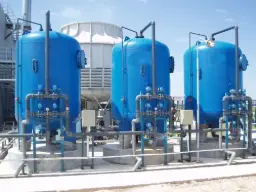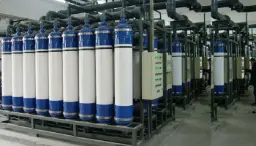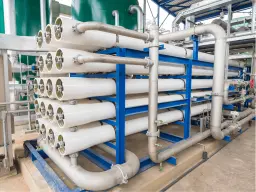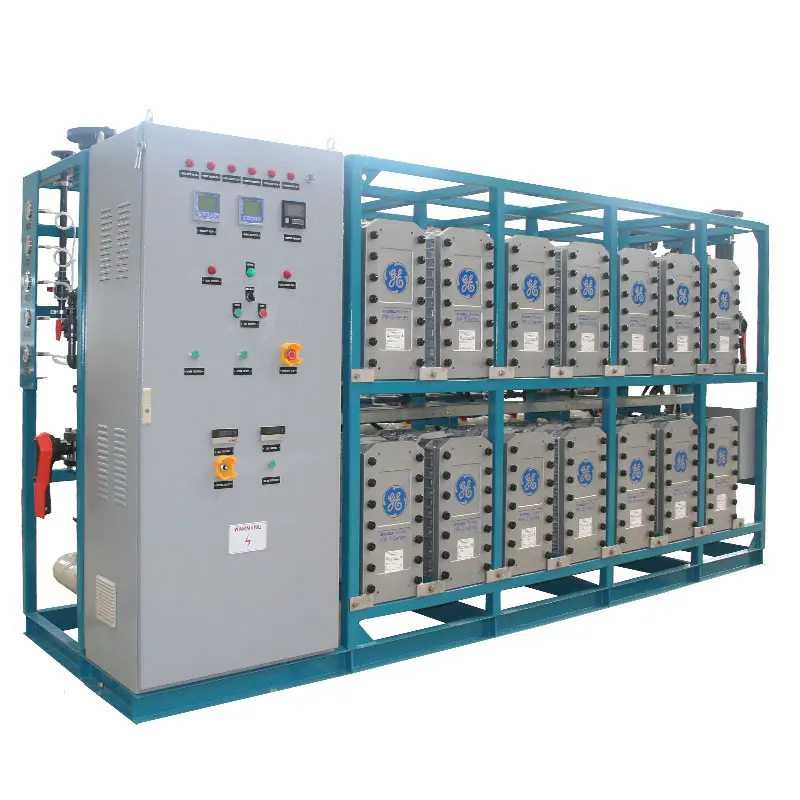Process Water Recycling and Reuse
Process water recycling and reuse has become a strategic priority for manufacturers that want to decouple growth from freshwater withdrawal, tighten environmental compliance, and reduce operating cost. In a typical plant, every cubic meter of water that enters the facility leaves as either product, steam loss, blowdown, waste concentrate, or unnoticed leaks. Recovering and re‑qualifying that water means intercepting streams once considered “spent” and polishing them to a specification that allows safe reuse in boilers, cooling towers, cleaning‑in‑place loops, or even high‑purity makeup. The practice draws on decades of innovation in pretreatment, membrane separation, advanced oxidation, and smart controls, yet each installation remains highly site specific. Chemical composition, flow variability, production scheduling, and local discharge limits all shape the final scheme. Operators appreciate that recycled water behaves predictably, reducing the need to chase pH or chloride swings caused by seasonal source‑water changes.
At the same time, financial teams see shorter payback periods as sewer surcharges rise and water‑scarcity pricing accelerates. Sustainability managers can report dramatic drops in total water consumption—an increasingly scrutinised KPI in ESG rankings. Regulators encourage reuse through tiered tariffs, while investors signal preference for circular‑economy projects. Because the discipline touches utilities, maintenance, and production, cross‑functional collaboration is essential from the earliest feasibility study. Piloting under real operating conditions helps validate membrane flux, fouling propensity, and biological stability. Once proven, the recycling network must integrate seamlessly with existing utility headers so that operators do not juggle valves manually. Finally, continuous data capture underpins assurance: operators track KPIs in dashboards and trigger alarms long before water quality drifts outside specification.
Systems Used for Process Water Recycling
Efficient process water recycling and reuse often relies on a toolbox mentality rather than a single “silver bullet” technology. Engineers layer complementary barriers so that upstream failures do not propagate downstream. Pretreatment removes the bulk of suspended solids, protecting fine‑pore membranes further along the train. Selective separation then targets dissolved ions or organics that compromise specific end uses, such as scale‑forming carbonate for boilers or total organic carbon that feeds microbes in cooling towers. Energy optimisation is achieved by staging pressure vessels or using variable‑speed drives that ramp down during low‑demand shifts. Control logic blends recycled and fresh water automatically, maintaining constant ionic strength while maximising reuse. Instrumentation feeds data to a historian, enabling trending of pressure, conductivity, and differential ORP in real time. The system also includes redundancy; duty‑standby pumps and duplex cartridge filters allow maintenance without interrupting flow. Materials of construction resist both chemical cleaning agents and the sometimes‑aggressive matrices found in concentrate. Skid modularity simplifies erection in congested pipe alleys and allows future capacity expansion. Digital twins simulate upset scenarios so planners can visualise how a rapid pH spike or valve misalignment influences the entire loop. Vendor selection prioritises proven references in comparable industries – asphalt mixing, beverage can rinsing, semiconductor back‑end – to minimise commissioning risk. Finally, remote support contracts guarantee specialist advice within hours, a safeguard when on‑site teams are lean.

Multimedia Filtration
A graded bed of anthracite, sand, and garnet captures suspended solids down to ~10 µm and flattens turbidity spikes that can overload downstream membranes. Backwash intervals adjust based on head-loss setpoints to conserve both water and energy.

Ultrafiltration
Hollow-fiber membranes with 0.01 µm pores strip colloids and most bacteria, yielding filtrate low in SDI that prolongs reverse-osmosis element life while operating at modest trans-membrane pressures.

Reverse Osmosis
Polyamide spiral-wound elements reject 95-99 % of dissolved ions, dramatically reducing TDS so permeate can be recirculated as boiler makeup or high-pressure wash water without promoting scale.

Electrodeionization (EDI)
Continuous self-regenerating ion-exchange stack refines RO permeate to sub-2 µS cm conductivities, eliminating chemical regenerants and enabling near-ultrapure reuse in sensitive rinsing steps or battery electrolyte dilution.
Key Water‑Quality Parameters Monitored
Process water recycling and reuse succeeds only when water quality consistently aligns with the duty requirements of each reuse point. Operators therefore track a suite of physical, chemical, and microbiological indicators, logging deviations and initiating corrective actions before product or equipment integrity is jeopardised. Turbidity remains a frontline metric because sharp rises often foreshadow membrane fouling; inline laser nephelometers deliver second‑by‑second resolution that grab sampling cannot match. Total organic carbon (TOC) offers a rapid proxy for treatability in applications where biological stability matters – pharmaceutical CIP water, for example. Conductivity exposes ionic loading changes and, when monitored across RO stages, pinpoints element degradation or feed infiltration. Oxidation‑reduction potential (ORP) guides the dosing of biocides or dechlorination agents, ensuring sufficient kill while preventing oxidative membrane damage. pH influences corrosion and scale equilibria; automated trim with CO₂ or caustic maintains buffering capacity without excessive chemical use. Silica and hardness ions are tracked closely for high‑pressure boilers, where even trace amounts precipitate onto heat‑transfer surfaces. Temperature affects saturation indices and microbial kinetics, so temperature‑compensated sensors are mandatory. Finally, ATP or heterotrophic plate counts quantify bio‑burden in recirculating loops, informing CIP scheduling.
Below, Table 1 summarises typical control envelopes and interventions:
| Parameter | Typical Range | Control Method |
|---|---|---|
| Turbidity (NTU) | < 0.5 for UF feed | Adjust coagulant dose, optimise backwash |
| SDI 15 (dimensionless) | < 3 for RO feed | Increase UF flux, replace cartridges |
| Conductivity (µS cm) | < 50 for EDI feed | Monitor RO rejection, clean membranes |
| TOC (mg L⁻¹) | < 0.5 for cooling reuse | Fine‑tune biological treatment, carbon polish |
| pH | 6.8‑8.2 depending on use | Dose acid/caustic via PID loop |
| ORP (mV) | +200 to +350 in oxidising loops | Modulate oxidant dosing skid |
| Silica (mg L⁻¹) | < 20 in boiler makeup | Add magnesium‑enhanced softening, antiscalant |
| Temperature (°C) | 15‑35 equipment dependent | Employ heat exchangers, insulate piping |
To help stakeholders visualise the dynamic behaviour of a real system, Figure 1 would display six months of hourly conductivity measurements at the RO permeate header versus the blended feed tank, highlighting seasonal trends, alarm thresholds, and corrective interventions plotted as vertical markers.
Design & Implementation Considerations
Designing a process water recycling and reuse plant demands rigorous interdisciplinary collaboration because errors propagate quickly through intertwined utilities. Engineers begin by mapping individual streams – identified by flow, temperature, chemical composition, and variability – using mass‑balance software. Peak and average loads drive tank sizing, pump heads, and membrane array staging, while future expansion factors buffer demand shocks triggered by new production lines. Material selection reconciles corrosion resistance with mechanical strength; duplex stainless steel resists chloride pitting, whereas FRP pressure vessels offer weight savings but require grounding to dissipate static. Process and instrumentation diagrams (P&IDs) must distinguish normally open from normally closed valves, double‑block‑and‑bleed ties for chemical injection, and high‑point vents to prevent air locks. Programmable logic controllers coordinate valve sequencing, backwash routines, and clean‑in‑place initiation, logging every action for audit. Integration with supervisory control and data acquisition (SCADA) platforms enables remote diagnostics, trending, and cyber‑secure firmware updates. International standards frame each decision: ISO 22000 drives hygienic design for food processors, while NSF/ANSI 61 certifies materials in contact with potable reuse water. Pharmaceutical installations may reference FDA’s 21 CFR part 210 on water for drug manufacture, and WHO Guidelines for Drinking‑water Quality provide additional safeguards where product touches humans. Electrical classification per IECEx or ATEX prevents ignition in volatile chemical plants. Noise and vibration assessments satisfy OSHA limits, protecting operator health. Structural engineers ensure equipment skids interface with seismic restraints where required by local building codes. Vendors must supply documentation packets – material test reports, certificates of origin, factory acceptance records – digitised for lifecycle traceability. Commissioning plans use the V‑model: component‑level verification, subsystem integration testing, and performance qualification under design‑load scenarios.
Operation & Maintenance
Sustained performance of a process water recycling and reuse system depends on disciplined operation and well‑planned maintenance that anticipates rather than reacts. Every shift starts with a dashboard review of overnight alarms, followed by a visual inspection of tank levels, valve positions, and any unusual vibrations. Cartridge filters are replaced on differential‑pressure triggers rather than calendar days, reducing consumable cost without risking breakthrough. Membrane trains undergo clean‑in‑place (CIP) when normalised flux declines by 10‑15 %, with tailored recipes – alkaline surfactant for organics, acid chelant for scale, or enzymatic solutions where bio‑films resist conventional cleaners. RO elements typically demonstrate four‑ to six‑year service life; MBR hollow fibers reach seven‑plus years with proper aeration control. Spare‑parts strategies categorise components by criticality: A‑class items like high‑pressure pumps and PLC CPUs are held in on‑site inventory, while B‑class sensors can be couriered within 48 hours via vendor hot‑stock programs. Lubrication schedules align with manufacturer recommendations, using food‑grade grease where cross‑contamination is an issue. Operators perform biweekly calibration of pH and conductivity probes against traceable standards, logging results for ISO 9001 audits. Predictive analytics flag anomalies such as increasing motor current or rising permeate boron concentration, prompting targeted interventions before compliance violations occur. Training programs certify technicians in confined‑space entry, chemical handling, and lock‑out tag‑out. Cross‑training pairs junior staff with experienced mentors, ensuring knowledge retention when turnover occurs. Periodic external audits benchmark the facility against peer plants, identifying best practices that can be transplanted domestically.
Challenges & Solutions
A process water recycling and reuse scheme faces a unique triad of technical, regulatory, and organisational obstacles that can erode ROI if left unmanaged. Scaling remains the perennial threat wherever calcium, magnesium, or silica laden streams are concentrated. Operators counter this by using threshold‑inhibitor antiscalants, dynamic pH control, and high‑shear concentrate recirculation loops that disrupt boundary‑layer growth. Bio‑fouling emerges when organics persist past pretreatment; ultraviolet advanced oxidation, periodic chloramination, and forward‑flush sequences keep bio‑film at bay. Regulatory hurdles surface when reuse quality drifts from accepted norms; a proactive compliance matrix maps each parameter to its governing code – from local wastewater bylaws to WHO potable standards – and assigns alarm setpoints below legal limits to create a safety buffer. Stakeholder resistance, though less visible, can stall projects; change‑management workshops that quantify water and energy footprints often win sceptics over. Finally, supply‑chain volatility for specialty membranes or resins is mitigated through multi‑year frame agreements and dual sourcing.
Advantages & Disadvantages
No industrial solution is devoid of trade‑offs; process water recycling and reuse delivers measurable benefits yet introduces new complexities that must be acknowledged. On the positive side, water abstraction drops by up to 90 %, dramatically shrinking the plant’s environmental footprint and exposure to drought‑related downtime. Sewer surcharges decrease proportionally, and the facility builds a resilience narrative that resonates with investors and local communities alike. Energy savings accrue when warm process streams are recycled internally instead of importing cooler raw water that must be reheated. Digitisation and remote monitoring further sharpen OEE (overall equipment effectiveness) by reducing unplanned downtime. Conversely, the CAPEX hurdle can be high, particularly where advanced membranes or oxidation processes are required. OPEX rises if chemical consumption and membrane replacement are not optimally managed. The complexity of multi‑barrier trains demands higher‑skilled operators, and failure to maintain stringent hygiene can amplify microbial risks. Implementation timelines lengthen due to permitting and pilot‑testing requirements. Understanding these pros and cons early supports realistic business‑case modelling.
| Pros | Cons |
| Reduced freshwater intake | Higher initial capital expenditure |
| Lower sewer and discharge fees | Increased operational complexity |
| Enhanced corporate sustainability profile | Skilled labour requirement |
| Energy recovery from warm streams | Potential chemical consumption increases |
| Regulatory compliance buffer | Longer permitting and pilot phases |
Frequently Asked Questions
1. What purity can I expect from a typical recycling and reuse train? A well‑designed UF‑RO‑EDI sequence consistently produces water below 2 µS cm conductivity, < 0.2 NTU turbidity, and negligible bacterial count, suitable for most boiler and rinse duties.
2. How long is the payback period? Depending on local water tariffs and sewer surcharges, payback ranges from 18 months to five years, with additional intangible benefits such as ESG scoring improvements.
3. Do I need to add fresh water periodically? Yes, a small bleeding and topping strategy (typically 5‑10 %) controls the accumulation of trace contaminants and balances ions that pass through membranes.
4. How is membrane fouling monitored? Operators track normalised flux, differential pressure, and spectroscopic foulant fingerprints; machine‑learning models now predict fouling weeks in advance.
5. Are chemicals required for EDI? No, electrodeionization stacks regenerate electrically, eliminating acid and caustic normally used in ion‑exchange beds.
6. Can the system run unattended overnight? Modern PLC‑SCADA integration with redundant communication paths allows lights‑out operation, provided emergency shut‑off valves and fail‑safe logic are installed.
7. What standards govern reuse in food production? ISO 22000 and relevant chapters of the Codex Alimentarius guide hygienic design and monitoring, while local authorities may impose stricter microbiological criteria.